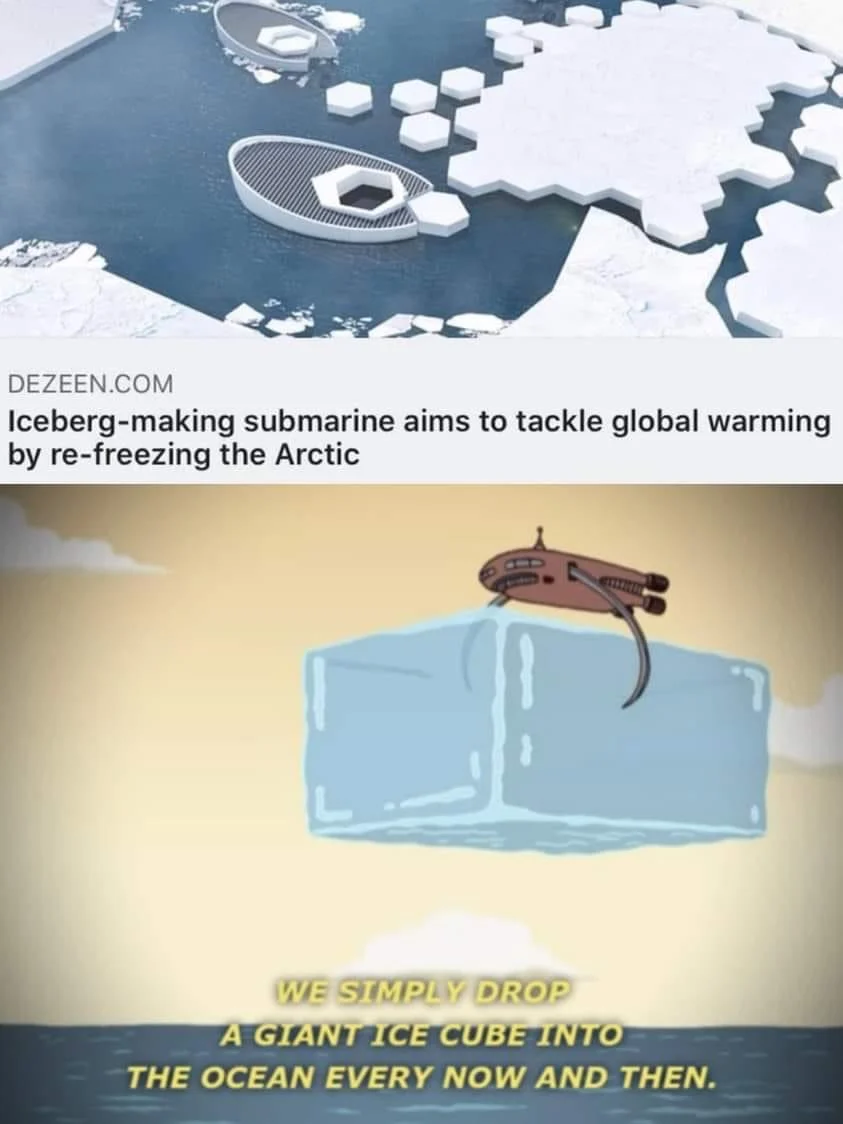And thus the problem of Global Warming was solved once and for all
And thus the problem of Global Warming was solved once and for all


But that-
ONCE AND FOR ALL!
And thus the problem of Global Warming was solved once and for all


But that-
ONCE AND FOR ALL!
You're viewing a single thread.
I wonder if they realize that, according to the laws of physics and thermodynamics, the amount of heat and energy they consume and put into the world in order to produce those ice blocks, actually exceeds the amount they're removing. So making ice blocks might help in the short term, but in the long term, they might actually make it worse, if not for the arctic, than for other places on the planet. Unless they're doing other stuff like planting trees, the best they could ever hope for is to simply break even; to cancel themselves out.
The ice isn't to cool the water, the ice is to reflect most of the incoming light.
Sea ice keeps the polar regions cool and helps moderate global climate. Sea ice has a much brighter surface compared to many other Earth surfaces, particularly the surrounding ocean. The darker ocean reflects only 6 percent of the sun’s energy and absorbs the rest, while sea ice reflects 50 to 70 percent of the incoming energy.
- https://nsidc.org/learn/parts-cryosphere/sea-ice/quick-facts-about-sea-ice
I suppose but if you are reflecting it into greenhouse gases then the air temperatures go up instead.
Not really. Greenhouse gases don't absorb all wavelengths of light. Generally they only absorb parts of the IR spectrum. The 50-70% of light reflected isn't absorbed by greenhouse gasses because it's not in a wavelength that it can absorb, it mostly radiates back into space.
Ah, and much of that energy would be absorbed on the way in. So the additional energy absorbed on the way out depends on how the surface material changes the reflected light or later radiates the absorbed energy.
Kinda. Most of the light from the sun is in the visible spectrum and the atmosphere does not absorb those frequencies well. Incoming light that gets reflected (snow/ice) stays in the same wavelengths so it passes back out just as easily. However the light that is absorbed by the ground is re-radiated mostly as IR and the atmosphere, specifically greenhouse gases are really good at absorbing those.
There's a lot more going on though, it's really complicated. Here are 2 vids that do a good job at explaining it:
https://www.youtube.com/watch?v=hUFOuoD3aHw&abchannel=SixtySymbols
https://www.youtube.com/watch?v=oqu5DjzOBF8&abchannel=SabineHossenfelder
The site says it’s an architecture journal so…
Could it be that the change in reflectivity compensates that?
you'd have to source the ice from someplace cold. Like drop a comet on the pole or something.